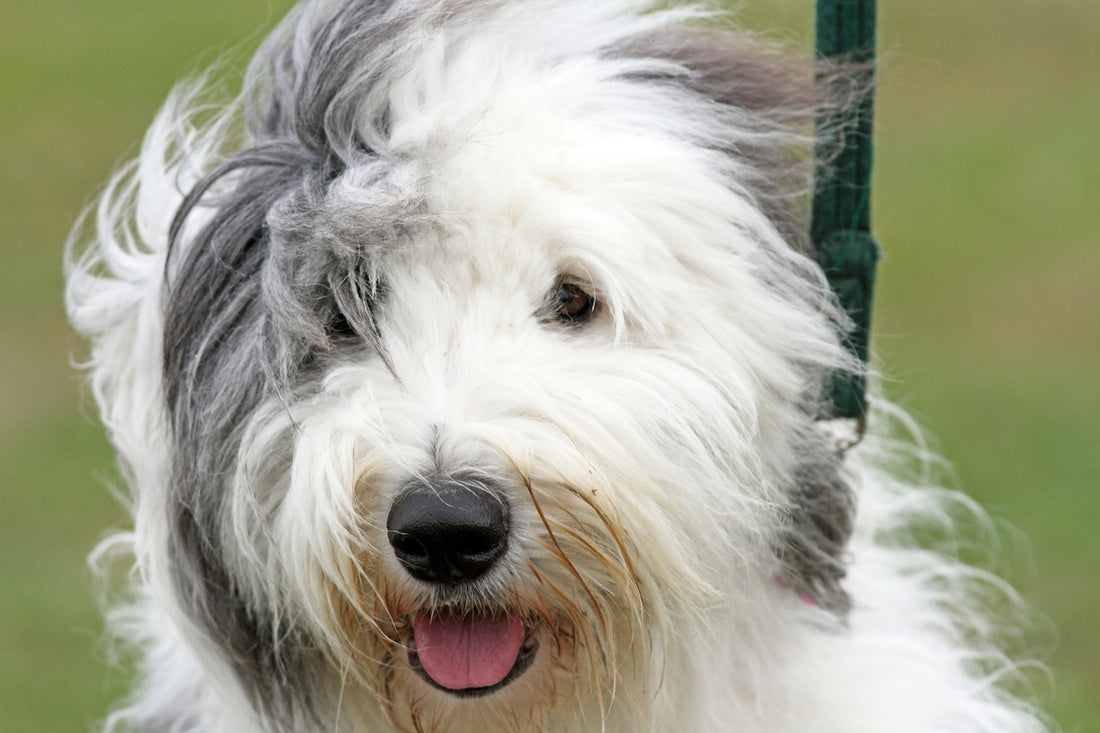Are you looking for a furry, lovable, and playful companion? Look no further than the Old English Sheepdog, a breed known for its charming teddy-bear-like appearance and friendly disposition. In this article, we'll dive deep into the characteristics, appearance, personality, habits, training and nutrition advice, healthcare, grooming, advantages, disadvantages, and curious facts of the Old English Sheepdog breed.
Old English Sheepdogs Breed Characteristics
Originating from England, the Old English Sheepdog was primarily bred for herding sheep. They are a medium to large-sized breed, with an average weight of 60 to 100 pounds and a height of 21 to 25 inches. The breed has a lifespan of 10 to 12 years and belongs to the herding group of dogs. Old English Sheepdogs are highly active and require daily exercise to maintain their health and happiness. They are also known to be vocal and have a moderate barking level. The breed is generally friendly towards other dogs, cats, and children, making them excellent family pets.
Old English Sheepdogs Appearance
The Old English Sheepdog has a distinctive, shaggy coat that is soft to the touch. Their body is stocky and muscular, with a broad head and muzzle. They have large, round eyes and a black nose. The breed has a tail that is customarily docked, but in some countries, docking is illegal. Their legs are thick and strong, with round, compact feet that are well-suited for herding. The coat of the Old English Sheepdog is typically white with black, gray, or blue markings.
Old English Sheepdogs Personality
The Old English Sheepdog is known for its friendly and lovable personality. They are intelligent and eager to please, making them easy to train. The breed is affectionate and loyal to its family, making them excellent family pets. They are also known to be gentle with children and other pets, making them a good fit for households with multiple animals. The breed's playful and mischievous nature makes them excellent companions for active families.
Old English Sheepdogs Habits
The Old English Sheepdog is an active breed that requires daily exercise to maintain its health and happiness. They enjoy long walks, runs, and playtime with their owners. The breed is also known to be playful and mischievous, often stealing items from around the house and playing with them. They are intelligent and eager to please, making them easy to train. The breed requires a lot of attention and affection from its owners, making it unsuitable for families who are not home for extended periods.
Training and Nutrition Advice for Old English Sheepdogs Owners
Old English Sheepdogs require a balanced diet that is high in protein and low in fat. Owners should avoid feeding their dogs table scraps, as this can lead to obesity and health problems. The breed is prone to bloating, a potentially life-threatening condition that occurs when the stomach twists. To prevent this, owners should feed their dogs small, frequent meals throughout the day. Old English Sheepdogs are intelligent and eager to please, making them easy to train. Owners should use positive reinforcement techniques such as treats and praise to train their dogs.
Healthcare for Old English Sheepdogs
Owners should take their Old English Sheepdogs for regular check-ups with a veterinarian. The breed is prone to hip dysplasia, a condition that occurs when the hip joint does not develop properly. They are also prone to eye problems such as cataracts and entropion. Owners should regularly wash their dog's ears to prevent infection and brush their dog's teeth to prevent dental problems. The breed's nails should be trimmed regularly to prevent them from getting too long and causing discomfort.
Old English Sheepdogs Grooming
Old English Sheepdogs have a thick, shaggy coat that requires frequent grooming. They shed year-round, but seasonal shedding occurs twice a year, and during this time, they will require even more attention. Regular brushing can help prevent matting, which can lead to skin irritation and infection. They will also need to be bathed regularly and have their ears and teeth cleaned. Owners may choose to trim their fur to make grooming more manageable.
The Advantages of the Old English Sheepdogs
Old English Sheepdogs are great family pets. They are loving, loyal, and protective of their families, making them excellent watchdogs. They are also friendly and social, making them good with children and other pets. They are adaptable and can do well in both city and country living. They are intelligent and can excel in obedience and agility training. They are also known for their sense of humor and silly antics, which can provide entertainment for their owners.
The Disadvantages of the Old English Sheepdogs
Old English Sheepdogs require a lot of maintenance due to their thick coat, which can be time-consuming and costly. They can also be stubborn and require consistent training to prevent bad habits from forming. They are prone to certain health issues such as hip dysplasia, cataracts, and deafness. They are also prone to obesity, which can lead to health issues.
Curious Facts about the Old English Sheepdogs
- The Old English Sheepdog was originally bred for herding sheep in England.
- The breed was nearly extinct after World War II but was saved by a breeding program.
- The Old English Sheepdog was featured in many advertisements in the 1980s and 1990s, including the Dulux paint commercials in the UK.
- The breed has a unique shuffle gait due to its heavy and low-set body.
- The Old English Sheepdog was one of the original breeds recognized by the American Kennel Club in 1885.
In summary, the Old English Sheepdog is a great family pet with its loving and loyal nature. However, they require a lot of maintenance due to their thick coat, and they may have health issues that need to be monitored. They have a unique history and are recognized as one of the original breeds by the American Kennel Club. People who are willing to commit to the maintenance and training required may consider getting an Old English Sheepdog as a pet.

